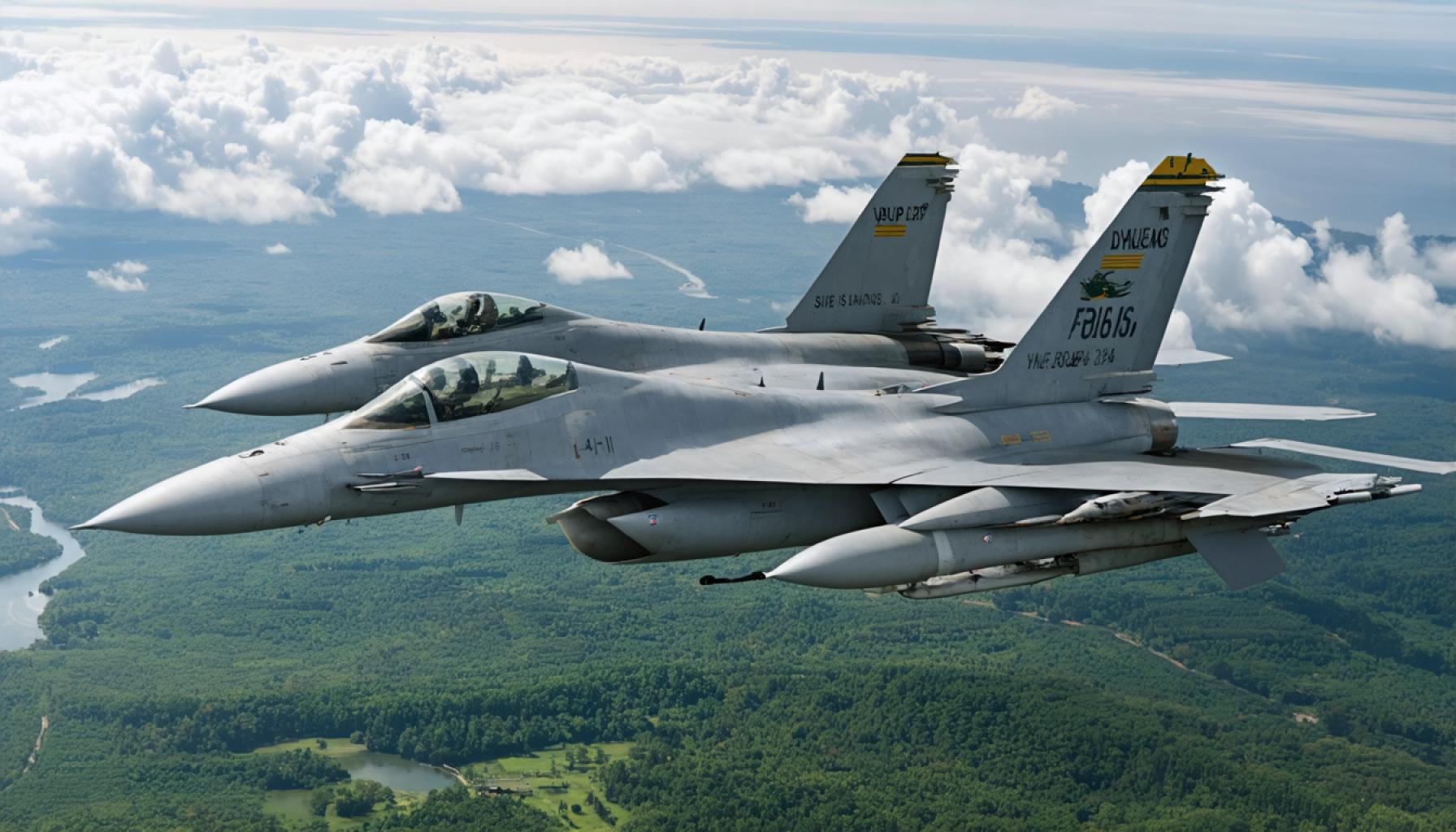- “Cope Thunder” is a joint military exercise enhancing the defense partnership between the U.S. and the Philippines amid Indo-Pacific tensions.
- The U.S. has approved a $5.5 billion deal to supply the Philippines with 20 F-16 fighter jets, indicating a strong commitment to regional security.
- This acquisition aims to improve the Philippine Air Force’s capabilities, particularly in maritime domain awareness and air defense.
- The South China Sea remains a hotspot due to China’s disputed territorial claims, necessitating advanced defense strategies.
- The F-16 deal highlights a strengthened U.S.-Philippines alliance, reflecting shared commitments amid growing geopolitical shifts in Asia.
- U.S. defense and diplomatic leaders reaffirm their pledges to support the Philippines, enhancing deterrence against potential threats.
Blazoned against the cerulean sky at Basa Air Base in Pampanga, an F-16 fighter jet stood ready, its sleek frame casting a formidable shadow on the tarmac. This scene set the stage for “Cope Thunder,” a joint military exercise symbolizing the latest chapter in the evolving defense partnership between the United States and the Philippines. Amid escalating tensions in the Indo-Pacific, particularly in the contentious South China Sea, this alliance emerges as both strategic and essential.
In a bold move underscoring its commitment, Washington has green-lit a monumental $5.5 billion deal to supply the Philippines with 20 state-of-the-art F-16s, along with requisite equipment. This deal, heralded by the U.S. Defense Security Cooperation Agency, goes beyond mere military hardware—it signifies a robust pledge to bolster regional security and stability.
As geopolitical tensions simmer, especially between China and its neighbors over disputed maritime territories, the need for agile, advanced defense capabilities becomes paramount. The South China Sea, a vital maritime artery, remains a flashpoint of international contention. China’s sweeping territorial claims, decisively rebuked by international courts, have not deterred its assertive stance, leaving neighboring nations on high alert.
The transfer of these fighter jets marks a pivotal enhancement of the Philippine Air Force’s operational capabilities. With the enhanced ability to conduct extensive maritime domain awareness and advanced air defense systems, this acquisition is a strategic leap forward for the nation, aiming to safeguard its sovereignty and the rules-based order in Southeast Asian waters.
Beyond military prowess, the F-16 deal reflects a reinvigorated diplomatic commitment. As global attention increasingly shifts to Asia, the dynamics between major powers are redefining international alliances. The U.S. recalibrates its military focus, reinforcing defense relationships with treaty allies like the Philippines while addressing the expanding influence of China.
During a recent visit to Manila, Defense Secretary Pete Hegseth articulated a clear vision: the reinstitution of deterrence in the Indo-Pacific is crucial amid rising threats from the People’s Republic. In parallel, Secretary of State Marco Rubio affirmed the U.S.’s unwavering defense commitments to the Philippines, a testament to the enduring bonds that transcend transactional engagements.
As these F-16s prepare to soar, they not only represent an upgrade in military might but also symbolize the resilience of partnerships forged in shared values and common futures. In the face of daunting challenges, the United States and the Philippines emerge together, poised to embrace a new era of collaboration and mutual defense in the ever-volatile theater of the Indo-Pacific.
What the $5.5 Billion F-16 Deal Means for U.S.-Philippines Relations Amid South China Sea Tensions
Key Highlights of the F-16 Deal: Transforming Defense Strategies in the Indo-Pacific
The decision to provide the Philippines with 20 advanced F-16 fighter jets signifies more than just an exchange of military hardware—it’s an infusion of strategic capabilities that reinforces the United States’ stance in a region gripped by tensions. Here’s a closer look at what this deal entails and the broader implications for security and geopolitical dynamics in Southeast Asia.
Technical Specifications and Features of F-16s
The Lockheed Martin F-16 Fighting Falcon, renowned for its versatility, is a multi-role fighter aircraft used by many air forces globally. Here are some key features:
– Advanced Avionics: Includes sophisticated radar systems and integrated electronic warfare (EW) systems for superior situational awareness.
– Precision Weaponry: Capable of deploying a variety of weapons, including air-to-air missiles and precision-guided bombs.
– Agility and Range: Offers exceptional maneuverability and extended range, making it effective for diverse operational scenarios.
– Modernization Potential: The F-16s can be upgraded with cutting-edge technology to enhance performance further.
Real-World Use Cases: Enhancing Philippine Defense Capabilities
– Maritime Security: The newly acquired F-16s will enhance the Philippine Air Force’s ability to monitor and patrol its maritime domain, particularly in disputed areas such as the South China Sea.
– Rapid Deployment: With increased agility, the Philippines can swiftly address potential threats, strengthening national and regional defense postures.
– Training and Collaboration: The deal encompasses training programs for Filipino pilots, fostering military expertise and enhancing interoperability in multinational exercises like “Cope Thunder.”
Geopolitical Implications: U.S.-Philippines Defense Alliance
– Strategic Deterrence: In response to China’s assertive territorial claims in the South China Sea, the U.S. seeks to reassert its strategic presence and deter potential aggression.
– Reinforcing Alliances: This military cooperation underscores a deep commitment to treaty allies, ensuring regional stability and security.
Market Trends and Forecast
With escalating defense needs in the Indo-Pacific, the market for advanced fighter jets like the F-16 is projected to grow. Military expenditures are expected to rise as nations seek to modernize their capabilities, ensuring preparedness against potential threats.
Addressing Limitations and Controversies
– Operational Costs: While F-16s bring advanced capabilities, they also entail significant maintenance and operational expenses, which could strain the Philippines’ defense budget.
– Diplomatic Sensitivities: The deal may provoke diplomatic tensions with China, potentially affecting bilateral trade and political relations.
Immediate Recommendations and Insights
– Strengthen Defense Diplomacy: Utilize enhanced military capabilities to encourage diplomatic dialogue and conflict resolution in regional disputes, particularly in the South China Sea.
– Invest in Technology Transfer: Embrace opportunities for technology exchange within defense collaborations, boosting local industries and expertise.
– Build Public Awareness: Educate the public on the strategic importance of modernized defense forces to garner support for national security initiatives.
For further insights into international defense collaborations and geopolitical trends, visit [Lockheed Martin’s website](https://www.lockheedmartin.com) and learn more about strategic military partnerships shaping global security.







